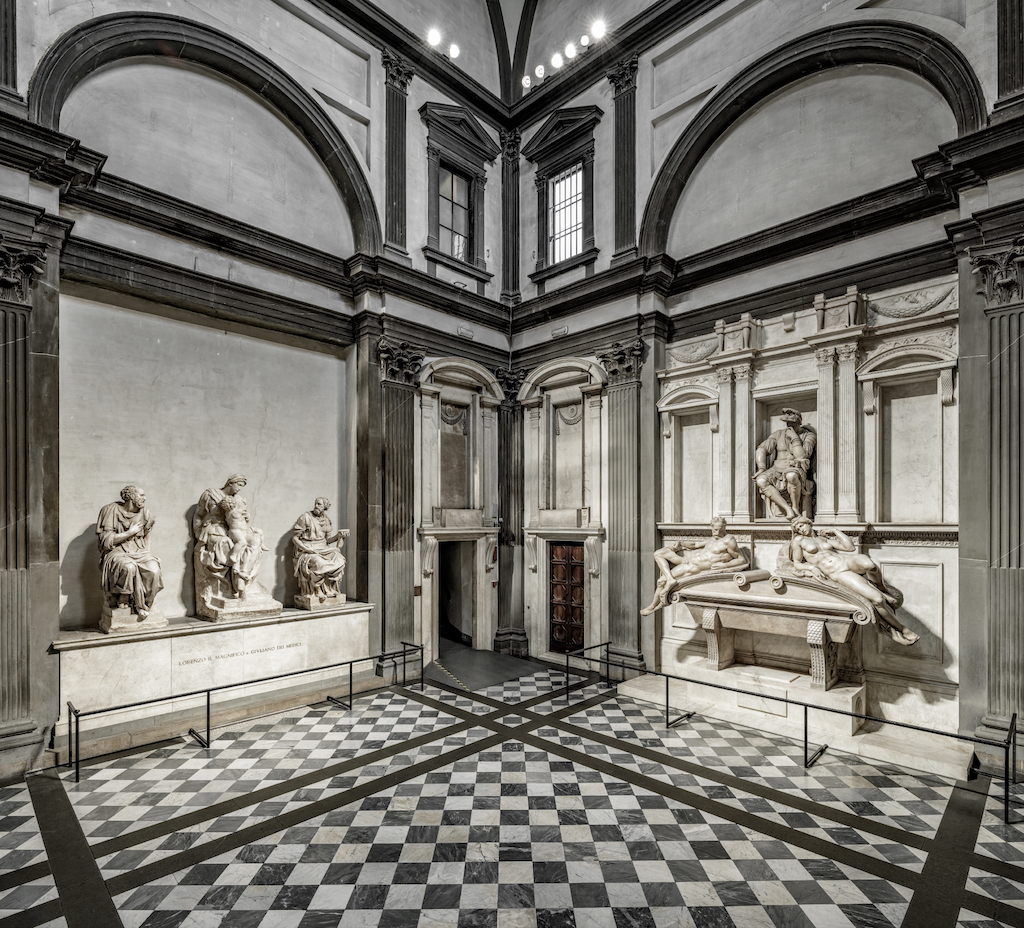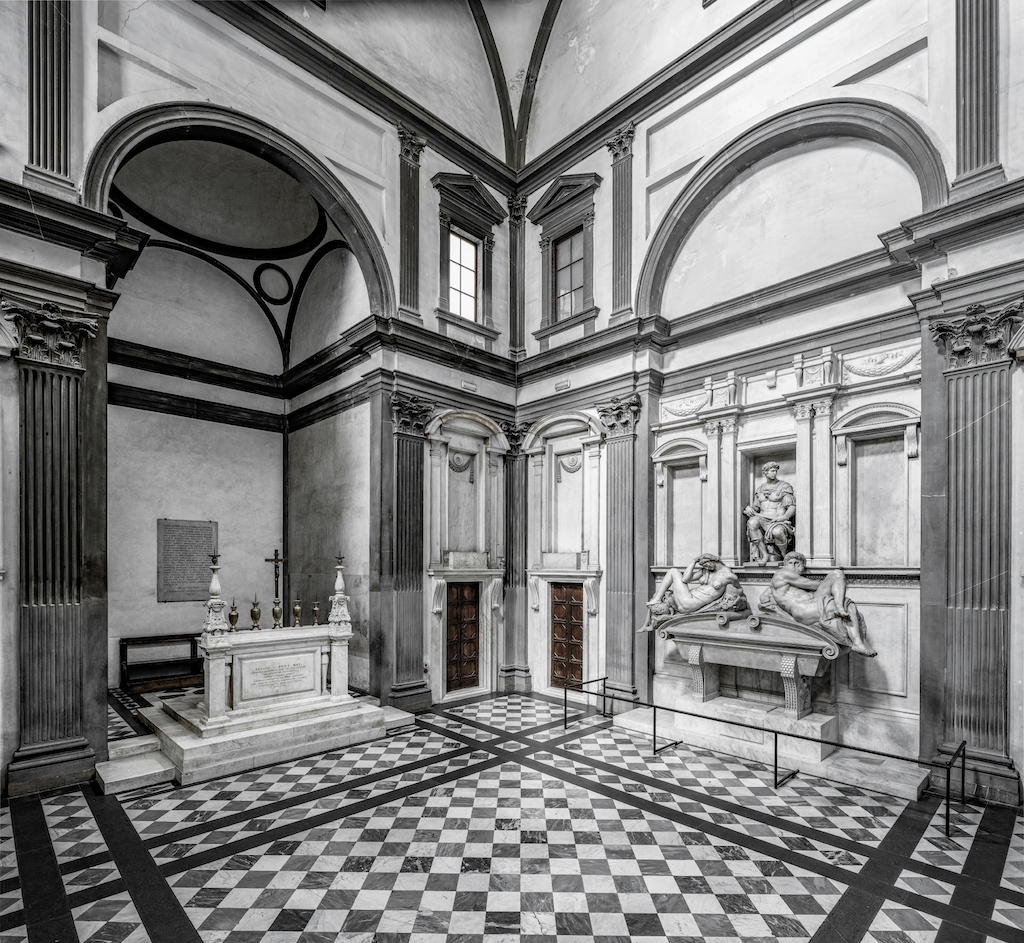After two years of renovation work, the New Sacristy in the Medici Chapels has begun a new chapter in its centuries-long history. With new lighting, thorough cleaning and a targeted restoration of the tomb of Lorenzo and Giuliano de’ Medici, the project aims to restore aspects of its original appearance to this space designed by Michelangelo.

Tomb of Lorenzo and Giuliano de’ Medici (left) and tomb of Lorenzo, Duke of Urbino (right)
Considered a masterpiece of the Italian Renaissance, the New Sacristy is unique in that Michelangelo designed not just the sculptures and decorations, but also the space itself. Indeed, leading art historians have long demonstrated how architecture, sculpture and the use of natural light are deeply connected in Michelangelo’s art, and nowhere is this more evident than in the New Sacristy. Through clever placement of the windows, the lighting envisioned by the Renaissance artist intertwined with the symbolic and narrative function ideated by Michelangelo himself, specifically in underlining the role of his sculptures.
Begun in 1520, the New Sacristy was commissioned to mirror the Old Sacristy designed by Brunelleschi, which can be accessed from the Basilica of San Lorenzo. The space contains the tombs of Lorenzo, Duke of Urbino, and Giuliano, Duke of Nemours, whose final resting places are adorned with the famed Dusk and Dawn (Lorenzo) and Day and Night (Giuliano). The tombs of Lorenzo the Magnificent and his brother Giuliano were left incomplete when Michelangelo was called to Rome in 1534.

Tomb of Giuliano, Duke of Nemours (right)
When the Chapel of the Princes was built in the 17th and 18th centuries, its imposing dome blocked the sun’s path for part of the year, cancelling out the effect Michelangelo intended the sunlight to have in the space. The new lighting system designed by “master of light” Mario Nanni includes LED floodlights installed at the base of the dome to ensure they do not interfere visually. The floodlights were designed purposely to imitate the sun when it passes closest to San Lorenzo, projecting “natural light” into the space, as Michelangelo originally desired.








